Mandatory disability insurance (AOV) for self-employed persons?
Mandatory disability insurance (AOV) for self-employed persons?
Five Frequently Asked Questions
In 2023 the (CBS) calculated that more than a third of self-employed persons in the Netherlands do not have a financial safety net if he or she suffers a loss of income due to incapacity for work or illness. The Basic Insurance for Disability for the Self-Employed (BAZ) bill, made public in June 2024 aims to rectify this situation. From (presumably) 2027, disability insurance (AOV) will become mandatory for self-employed persons. Artlupa answers five frequently asked questions about mandatory AOV.
For whom will AOV be mandatory?
If the BAZ Act is put into force, disability insurance will become mandatory for IB entrepreneurs: these are self-employed persons who profit from their business. If you are self-employed and you do not yet have AOV, you can assume that you will have to insure yourself within a few years, even if you are affiliated with a (schenkkring) or (broodfunds).
Have you already insured yourself against incapacity to work? Then you don't have to take out new insurance. Your current insurer should be able to provide with the relevant information in this regard. Directors/major shareholders and life partners who work in their partner's business are also exempt from the insurance obligation.
What will the mandatory AOV cost?
Do you fall into the above-mentioned category of self-employed people? Then you will pay a maximum of 195 per month for your AOV under the DBA. If you want to know what your AOV will cost, you can assume it will be 6.5 percent of your taxable profit from the business, including the SME profit exemption and entrepreneur's deduction. The AOV amount is tax deductible from your profits.
How do you arrange your AOV?
You will pay the premium for the new AOV to the Tax and Customs Administration. You can arrange this through the UWV. The AOV is already available there as voluntary insurance and government agencies strongly advise you to do so. You can do so via this link by logging in with your DigiD.
How much does the UWV pay out?
Self-employed persons with an AOV from the UWV will receive a benefit for one year after incapacity to work, this will continue until you are entitled to AOW. The maximum for this benefit will be equal to the minimum wage set at that time. If you are only able to work partially due to illness and your income is below the minimum wage, the AOV benefit will supplement up to this amount.
When does the mandatory AOV take effect?
At the time of this letter (October 2024), it looks like the bill for mandatory AOV will go to the House of Representatives in the spring of 2025. After that, it will take a few years before the insurance is available. Lupacompany will of course keep you informed of new developments regarding the mandatory AOV.
Read more
On the Dutch Governments Website you can find out more about mandatory AOV for self-employed persons. Another draft law that may affect your work as a self-employed person is the VBAR, which lays down new criteria for self-employment. You can read in This article about possible changes that may effect your situation. We have published several articles for and about self-employment. An overview is available Here.
